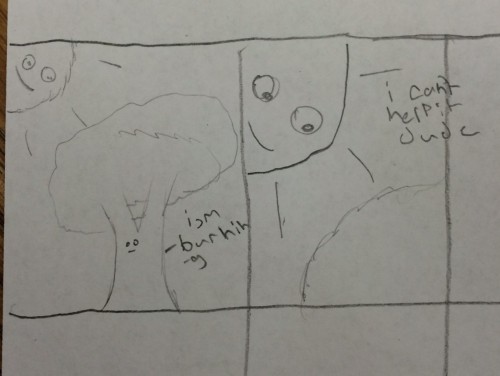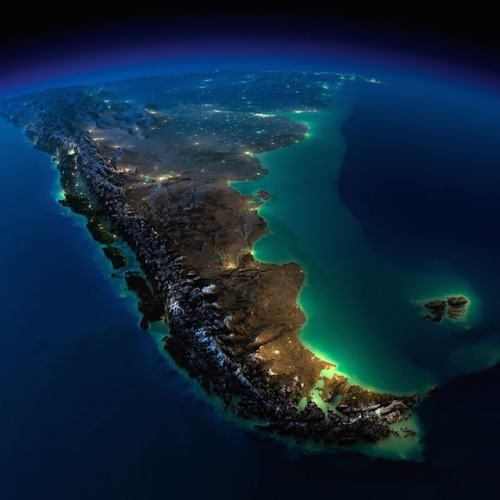One Of My Third Graders Has A Special Talent For Making 2-frame Comics That Really Speak To Me

one of my third graders has a special talent for making 2-frame comics that really speak to me
More Posts from Drunkscience4u and Others

Hold your nose at this science pun.









Black Hole Caught Devouring Star For An Entire Decade
“Normally lasting weeks or months, a new record has just been set for TDEs. XJ1500+0154, 1.8 billion light years away, is the largest, longest-lasting one ever seen. First detected in July of 2005, the X-rays from this distant source brightened by a factor of 100 over 3 years. They remain bright even today. Although dozens of TDEs have been observed since the 1990s, none have lasted this long. It may be caused by the most massive star ever observed creating a TDE.”
When any object passes too close to the event horizon of a black hole, the tidal forces acting on it can become so strong that they’ll tear the entire object apart in a spaghettification disaster. While most of the matter will get ejected from the encounter, a significant fraction can be accreted, absorbed and used to fuel the black hole’s growth. These tidal disruption events have been seen numerous times since the launch of our X-ray observatories, and are now known to come in a wide variety of magnitudes, at a variety of distances and to last a variable amount of time. So when you see the largest, longest-lasting one ever, you sit up and take notice! That’s exactly what’s happened with XJ1500+154, which is now in its second decade of X-ray signals.
Come get the full story on this amazing object, and learn how it might solve the puzzle of supermassive black hole growth on today’s Mostly Mute Monday!


Cloud Chambers: Visualizing Radiation
The cloud chamber, also known as the Wilson chamber, is a particle detector used for detecting ionizing radiation.
In its most basic form, a cloud chamber is a sealed environment containing a supersaturated vapor of water or alcohol. When a charged particle (for example, an alpha or beta particle) interacts with the mixture, the fluid is ionized. The resulting ions act as condensation nuclei, around which a mist will form (because the mixture is on the point of condensation).
The high energies of alpha and beta particles mean that a trail is left, due to many ions being produced along the path of the charged particle. These tracks have distinctive shapes, for example, an alpha particle’s track is broad and shows more evidence of deflection by collisions, while an electron’s is thinner and straight. -(x)
More science and gifs on my blog: rudescience Gif made from: This video by The Royal Institution References: (x), (x).
Please subscribe, like, comment, and donate! This was the last episode of this season. Keep an eye out on the facebook page for more information on Season 2. Please comment below for any experiments or simple science you'd like us to explain while drunk! Starring: Candice Lola Directed by Rebecca Berger Produced by Rebecca Berger and Candice Lola Written by Candice Lola Editing, Color, Sound Design by Rebecca Berger Animation by Rachael K McDonald Links: Music: http://ift.tt/1JICaNj and http://ift.tt/2lquxdO http://ift.tt/2lINlQJ http://ift.tt/2lqtjzr http://ift.tt/2lIL08B http://ift.tt/2lqvuCQ (Donations are always welcome!) http://ift.tt/2lITyw7 http://ift.tt/2lqvQJO



Time for another comic on our reddish dwarf planet, Makemake!
(Polaris is pushed for tomorrow ;) )
http://www.space.com/23122-makemake.html
-
 spookybaritone reblogged this · 1 week ago
spookybaritone reblogged this · 1 week ago -
 chancellorcannoli reblogged this · 1 month ago
chancellorcannoli reblogged this · 1 month ago -
 sympatheticfiend reblogged this · 2 months ago
sympatheticfiend reblogged this · 2 months ago -
 sympatheticfiend liked this · 2 months ago
sympatheticfiend liked this · 2 months ago -
 concerto-roblox reblogged this · 2 months ago
concerto-roblox reblogged this · 2 months ago -
 concerto-roblox liked this · 2 months ago
concerto-roblox liked this · 2 months ago -
 screambirdscreaming liked this · 4 months ago
screambirdscreaming liked this · 4 months ago -
 dededelight reblogged this · 5 months ago
dededelight reblogged this · 5 months ago -
 dededelight liked this · 5 months ago
dededelight liked this · 5 months ago -
 thekaboom liked this · 5 months ago
thekaboom liked this · 5 months ago -
 rainingmoondrops liked this · 6 months ago
rainingmoondrops liked this · 6 months ago -
 jnssq reblogged this · 9 months ago
jnssq reblogged this · 9 months ago -
 jetswife liked this · 11 months ago
jetswife liked this · 11 months ago -
 peaches-bee liked this · 1 year ago
peaches-bee liked this · 1 year ago -
 screenpastel liked this · 1 year ago
screenpastel liked this · 1 year ago -
 radleyarts liked this · 1 year ago
radleyarts liked this · 1 year ago -
 auntie-cosima liked this · 1 year ago
auntie-cosima liked this · 1 year ago -
 a-pixel-perfect-world liked this · 1 year ago
a-pixel-perfect-world liked this · 1 year ago -
 a-grumpy-opossum reblogged this · 1 year ago
a-grumpy-opossum reblogged this · 1 year ago -
 shegufta reblogged this · 1 year ago
shegufta reblogged this · 1 year ago -
 findingmotherland liked this · 1 year ago
findingmotherland liked this · 1 year ago -
 jamie-55 reblogged this · 1 year ago
jamie-55 reblogged this · 1 year ago -
 everymlmhybrid reblogged this · 1 year ago
everymlmhybrid reblogged this · 1 year ago -
 lonelinessisadisease liked this · 1 year ago
lonelinessisadisease liked this · 1 year ago -
 existentialcrisisetcetera reblogged this · 1 year ago
existentialcrisisetcetera reblogged this · 1 year ago -
 colamutt liked this · 1 year ago
colamutt liked this · 1 year ago -
 florphy reblogged this · 1 year ago
florphy reblogged this · 1 year ago -
 patroncrow reblogged this · 1 year ago
patroncrow reblogged this · 1 year ago -
 shiftwux liked this · 1 year ago
shiftwux liked this · 1 year ago -
 corknaut reblogged this · 1 year ago
corknaut reblogged this · 1 year ago -
 darkcenlockdomde liked this · 1 year ago
darkcenlockdomde liked this · 1 year ago -
 curi0uscanine reblogged this · 1 year ago
curi0uscanine reblogged this · 1 year ago -
 blue-eyed-boss liked this · 1 year ago
blue-eyed-boss liked this · 1 year ago -
 nope-4 liked this · 1 year ago
nope-4 liked this · 1 year ago
The official page of Drunk Science! An enthusiastic host performs simple experiments and then humorously explains the science behind the result, all while visibly drunk.
126 posts


















